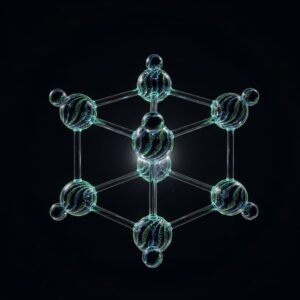
Australian researchers have made a significant breakthrough in solar technology, discovering that incorporating graphene into perovskite solar cells can boost their efficiency to an impressive 30.6 percent. This advancement also reduces the dependency on costly gold and silver conductors, marking a pivotal moment in solar cell manufacturing.
The research is a result of a collaboration between Halocell Energy, a perovskite cell company, and the Queensland University of Technology (QUT). Established in 2023, this partnership aims to commercialize advanced solar technologies. The latest findings indicate that adding a layer of graphene—a lightweight, highly conductive material derived from graphite—to perovskite solar cells can be seamlessly integrated using roll-to-roll dispersion technology. This method is commonly used to apply additional layers to flexible substrates like solar panels.
Graphene’s Role in Solar Efficiency
According to Halocell Energy, the inclusion of graphene nearly doubles the efficiency of the solar cells. Paul Moonie, CEO of Halocell Energy, emphasized the strategic advantage this development brings to their product line. “This material will be included in sales of our Ambient PV range already available for purchase, as well as our drone and satellite PV modules,” Moonie stated.
The company has secured a three-year grant of $2.03 million from the federal Cooperative Research Centres Projects (CRC-P) to further support their research efforts with QUT. This financial backing underscores the potential impact of graphene-enhanced perovskite cells on the solar industry.
Historical Context and Challenges
Perovskite solar materials have long been heralded as a promising alternative to traditional silicon-based photovoltaics. They offer the benefits of being lightweight, flexible, and cost-effective, while maintaining efficiency comparable to silicon. However, the commercial viability of perovskite-based solar cells has been hindered by challenges such as material stability and durability.
In April, a QUT team set a new efficiency record for perovskite technology, highlighting the ongoing advancements in this field. By July, Dr. Minh Tam Hoang from QUT’s School of Chemistry and Physics received a grant to collaborate with Halocell on addressing the toxicity and instability issues associated with metal halide perovskite materials.
“Australia needs better fabrication processes for next-generation perovskite solar cells so we can increase market adoption of commercially viable technology with minimal risk in production,” Dr. Hoang remarked. “By developing green-solvent solution processing—and PSCs based on tin instead of lead—this project will make real-world PSC manufacture cleaner and safer, delivering a new class of efficient, safe, stable, environmentally responsible solar cells.”
Future Prospects and Industry Impact
The hurdles facing perovskite solar cells are gradually being overcome, as evidenced by companies like California’s Caelux, which has begun shipping perovskite glass. Halocell, too, has been selling indoor cells in Australia for small electronics since last year. The company is currently expanding its manufacturing capacity at a plant in Wagga Wagga, aiming to produce 60 million units annually.
This development represents a significant leap forward in solar technology, potentially transforming the energy landscape by making solar power more accessible and affordable. As the industry continues to evolve, the integration of graphene into perovskite solar cells could play a crucial role in meeting global energy demands sustainably.
For those eager to stay informed about the latest in clean energy innovations, subscribing to our free daily newsletter is an excellent way to receive updates directly to your inbox.






